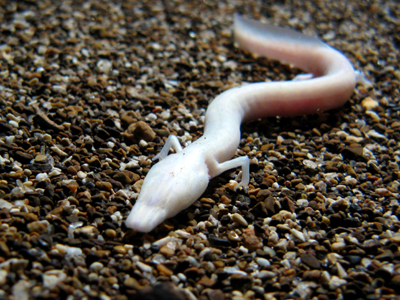
THE PROTEUS PROJECT

It was in 2000 when speleologist Brian Lewarne from Devon Karst Research Society made his first trip to Eastern-Herzegovina. He fell in love with the area immediately. It’s one of the most active karst areas in the World. Caves, sinking rivers, springs, pits, and every possible wonder of the nature a speleologist can imagine.
Caves are not just holes in the mountains. This fact is especially true here: they are resources for drinking water, irrigation, electricity, and last but not least they are the home for many endemic and endangered species. One of these hypogean animals is the emblematic specimen of the research, the blind cave salamander, Proteus anguinus.
With the leadership of Brian a team has formed to investigate the catchment area of the river Trebisnica and its caves. This small corner of the World is just one hour driving from the Adriatic Sea’s most popular tourist destination Dubrovnik. The area is huge, it is more than 3000 square miles and the number of the caves are endless.
DKRS is doing the coordination, the local Zelena Brda Caving Club is investigating the dry caves, and the Hungarian Cave Diving team is doing the cave dives.
In the last 8 years lot of things have happened connected to the project.
We got to know the area more or less, and we made good connections with the local authorities, and the people who live around. Our database contains around 400 caves and we’ve dived in at least 30 of them. The tasks are really diverse: searching for old documents related with our work, finding the locations, getting the permissions, clearing the site from garbage and explosives remained from the war, doing chemical and microbiological water analysis, dye testing, identifying specimens, mapping the caves, making behavior descriptions, documenting with pictures, and videos, developing the database, doing presentations to inform and educate.
Diving in the caves is prohibited unless you are a "project worker" and member of the diving team. It sounds strict and it is.
At the moment only Zelena Brda Caving Club is responsible for the control of the whole area and since they don’t have enough human and financial resources they decided to keep it this way.
The diving activity is just as various as the tasks. Different caves, different activities, require different configurations.
Cave diving is with a lot of hassle, days of preparation, tons of equipment, it’s hot outside and it’s freezing cold in the water. But the feeling of the discovery is what you get in return. You have the opportunity to see places only a few, or nobody else have seen before, with alien looking creatures swimming around you.
Animals like blind shrimps with their antennas twice as big as their body size, white tube worms hanging from the ceiling, snails crawling slowly on rocks, fishes drifting curiously in the ray of your light, and the most strange one: the Proteus.
This salamander is one of the most interesting animals on the planet, even if we know only a little about it.
The adaptation of these animals for the cave environment is amazing. Their useless eyes are reduced and covered with skin. They search for their pray with well developed olfactory organs and sensitive mechanoreceptors. Their metabolic rate is slow; they can survive without food for years and live up to 100 years!
There is only one thing they can not deal with, and that is the human race and its effect on the environment. The more we know the more we are afraid that this wonderful ecosystem is going to disappear unless we do something to protect it. The only way to do it is to understand better how it works and that’s what we are trying to do.
Learn more about how can you help at http://www.devonkarst.org.uk/Proteus Project
See pictures of these creatures here
Written by Gergo Balazs. Photo Credit: Gergo Balazs.